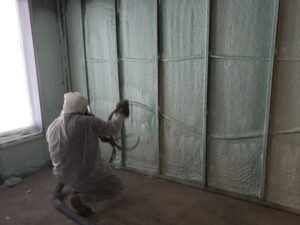Machine for Blown-In Insulation: A Comprehensive Guide
Insulating your home isn’t just about keeping temperatures consistent and comfortable. It’s a strategic energy conservation method that can shave off significant amounts from your energy bills while also making your living space more sustainable. Among various insulation methods, blown-in insulation has gained popularity for its efficiency, especially in those hard-to-reach spots. But do you really need a machine for blown-in insulation, or can this be managed DIY-style? In this comprehensive guide, we are exploring all the ins and outs of using a machine for blown-in insulation and why it might be your best investment yet.
Types of Machines for Blown-In Insulation
Portable Machines
These are ideal for the homeowner looking for a cost-effective and manageable machine. Designed for simplicity, they can cover smaller areas efficiently. They come with easy-to-follow instructions but may not pack the same punch as professional-grade equipment.
Truck-Mounted Machines
Contractors and those dealing with large-scale insulation projects may find truck-mounted machines more appropriate. These behemoths are designed for high-capacity, offering a quick and efficient way to insulate vast areas without the need for constant refilling.
Factors to Consider When Choosing a Machine
When it comes to selecting the right blown-in insulation machine, there are several factors to weigh:
Capacity
The size of the area you need to insulate will dictate the machine capacity you require. A larger capacity will reduce refill times and complete your project more swiftly.
Mobility
How easy is it to transport the machine to different parts of your home or job site? Portable machines are often more maneuverable but may require more trips for refilling.
Efficiency
Look for a machine that balances energy consumption with output efficiency. Some machines are designed to minimize the power required to blow the insulation, ensuring you get the most coverage for your cost.
Cost
The upfront cost for purchasing a machine, or the rental cost, and the cost of insulation material all need to be considered. Weigh it against the benefits to ensure cost-effectiveness.
Benefits of Using a Machine for Blown-In Insulation
Time-Saving
The use of a machine significantly cuts down the time spent on insulation projects, making the process quick and efficient. It helps to complete tasks that could be labor-intensive if done manually.
Uniform Insulation
A machine ensures that the insulation is distributed evenly across the area, leaving no spots untouched. This uniformity is key to effective insulation and temperature regulation in your home.
Cost-Effectiveness
Although there is an initial investment involved, the longer-term cost savings from efficient insulation, and the potential increase in property value can outweigh the initial expense.
How to Operate a Blown-In Insulation Machine
Preparation
First, ensure you have the right safety equipment and that the space to be insulated is ready. Ensure all openings are sealed, and the machine is set up correctly, with the right type and amount of insulation material.
Installation Process
Connect the hoses and power up the machine. Start blowing insulation from the corners and work your way out, ensuring an even spread. Take your time to avoid overfilling spots.
Maintenance Tips
Like any equipment, blown-in insulation machines require maintenance. Regular cleaning of hoses, filters, and the machine body will keep it functioning at its best for years to come.
Local Availability
For those in the New York, New Jersey, and Long Island regions, finding a machine can be as easy as a quick internet search. Various equipment rental and sales companies cater to the specific needs of local homeowners and contractors, providing the tools necessary for successful blown-in insulation projects.
To rent a blown-in insulation machine, your options include home improvement stores that often have tool rental departments. Additionally, you can check with specialized insulation companies or professional equipment rental services. It’s important to select a reliable provider to ensure you are getting a well-maintained machine and suitable support, including training if needed.
In sum, deciding whether you need a machine for blown-in insulation hinges on the scope of your project, your expertise, and your resources. For larger areas and professional endeavors, investing in or renting a machine is likely a wise choice. However, for the occasional small DIY insulation job, a machine may not be necessary. The key is to evaluate your needs and the benefits of machine usage and make an informed decision that aligns with your insulation goals and budget. Whether you’re weatherizing your home for personal comfort or prepping a property for energy efficiency, understanding the role of these machines in your insulation plan is crucial.
By prioritizing this often-overlooked aspect of home maintenance and improvement, you can dramatically impact your living conditions and even contribute to reducing your carbon footprint. Insulation isn’t just about walls and spaces; it’s a vital step in a holistic approach to home management and environmental responsibility.

